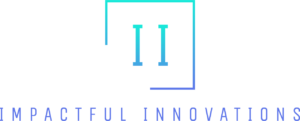Understanding Appointment Setting
Appointment setting is a fundamental process in business development and sales, focused on scheduling meetings between potential clients and sales representatives. It serves as the bridge between initial outreach and closing a sale, ensuring that leads are nurtured effectively and efficiently. At its core, appointment setting helps businesses convert prospects into actual conversations, increasing the likelihood of securing deals. Unlike general lead generation, which focuses on attracting potential clients, appointment setting specifically aims to schedule committed interactions with decision-makers. This process is essential for businesses looking to streamline their sales pipeline and maximize time efficiency for their sales teams. By securing appointments, companies can focus on high-quality interactions rather than spending excessive time chasing unqualified leads. Overall, appointment setting is a strategic tool that directly impacts revenue growth and client acquisition.
The Role of Appointment Setters in Business Growth
Appointment setters play a pivotal role in ensuring sales teams operate at peak efficiency. These professionals are responsible for contacting leads, qualifying them, and scheduling appointments with sales representatives or account managers. Skilled appointment setters help businesses maintain a steady stream of qualified prospects, which is crucial for predictable growth. Their work allows sales teams to focus on converting prospects rather than spending time on preliminary outreach. Appointment setters also enhance customer experience by providing clear communication and ensuring potential clients feel valued and understood. They serve as the first point of contact, representing the company’s brand and professionalism. By effectively managing the initial engagement, appointment setters contribute to higher conversion rates and stronger client relationships, making them indispensable to any sales-driven organization.
Appointment Setting Methods and Tools
Traditional appointment setting methods often include cold calling, email outreach, and networking, which remain effective when executed strategically. Cold calling allows businesses to make direct contact with leads and tailor conversations to their specific needs. Email outreach can complement calls by providing detailed information and scheduling options, creating a professional impression. Modern appointment setting leverages technology to improve efficiency and accuracy. Customer Relationship Management (CRM) software, automated scheduling tools, and AI-driven outreach platforms allow appointment setters to manage leads systematically and reduce manual effort. Social media outreach and LinkedIn prospecting have also become powerful methods to identify decision-makers and initiate engagement. Combining traditional methods with digital tools ensures a higher chance of successfully scheduling appointments and maintaining an organized sales pipeline. Businesses that adopt a hybrid approach often see better results in both lead conversion and operational efficiency.
Key Skills Required for Effective Appointment Setting
Effective appointment setting requires a combination of communication, organization, and strategic thinking. Strong verbal communication is crucial, as appointment setters must convey value to potential clients while maintaining a professional and persuasive tone. Active listening is equally important, allowing them to understand client needs and respond appropriately. Time management and organizational skills are essential to track multiple leads, follow-ups, and schedules efficiently. Research skills help appointment setters understand the prospects’ industries, pain points, and preferences, making outreach more personalized. Handling objections and rejections professionally ensures that opportunities are not lost due to a negative first impression. Additionally, adaptability is key in responding to different client personalities and scenarios. By developing these skills, appointment setters can consistently secure appointments that drive meaningful business growth.
Benefits of Appointment Setting for Businesses
Appointment setting offers numerous benefits for businesses of all sizes, primarily by improving efficiency and revenue potential. It ensures that sales teams spend time engaging with qualified leads, which increases the likelihood of closing deals. Proper appointment setting also enhances the quality of leads by filtering out unqualified prospects before meetings occur. By streamlining the sales process, businesses can better allocate resources and focus on strategic growth activities. Appointment setting contributes to stronger client relationships, as prospects feel prioritized and valued through timely and professional communication. It also supports scalability, allowing organizations to grow their customer base without overburdening sales teams. Overall, effective appointment setting transforms the sales process into a more predictable and manageable system, boosting both performance and profitability.
Challenges in Appointment Setting and How to Overcome Them
Despite its benefits, appointment setting comes with its challenges, requiring strategy and persistence to overcome. Gatekeepers, such as receptionists or administrative staff, often limit access to decision-makers, making it difficult to reach the right contact. Cold leads that show little interest can also reduce conversion rates and demotivate appointment setters. Scheduling conflicts and time zone differences may cause cancellations or reschedules, affecting workflow efficiency. Businesses can address these challenges by implementing a multi-channel approach, using phone calls, emails, and social media simultaneously. Script optimization and training help appointment setters handle objections and engage prospects more effectively. Maintaining motivation through performance tracking and incentive programs also ensures consistency and persistence in outreach. With the right strategies, appointment setting challenges can be minimized, leading to more successful meetings and higher conversion rates.
Measuring Appointment Setting Success
Tracking and measuring the effectiveness of appointment setting is essential for ongoing improvement and strategic decision-making. Key performance metrics include the number of appointments set, the conversion rate of scheduled meetings into sales, and the return on investment (ROI) of outreach efforts. CRM software and analytics tools provide insights into lead behavior, response rates, and scheduling efficiency. Monitoring these metrics allows businesses to identify trends, refine scripts, and optimize outreach timing. Appointment setters’ performance can also be evaluated based on lead quality and engagement levels during conversations. Regular reviews and feedback sessions help improve skills, increase efficiency, and ensure alignment with business objectives. By consistently measuring and analyzing appointment setting success, organizations can maximize revenue potential and maintain a strong sales pipeline.
Tips for Businesses to Optimize Appointment Setting
Optimizing appointment setting involves strategic planning, technology adoption, and team management. Businesses should evaluate whether in-house appointment setters or outsourced teams are best suited for their needs. Training programs that emphasize communication, product knowledge, and objection handling ensure that appointment setters perform effectively. Leveraging technology, such as CRM systems, automated scheduling, and data analytics, enhances efficiency and reduces human error. Segmenting leads based on their likelihood to convert allows appointment setters to prioritize high-value prospects. Regular performance tracking and adjustments based on analytics ensure ongoing improvement. Providing incentives, clear goals, and professional development opportunities keeps appointment setters motivated and engaged. By implementing these strategies, businesses can maximize the efficiency and effectiveness of their appointment setting process.
FAQ Section
What is the difference between appointment setting and lead generation?
Lead generation focuses on attracting potential clients and gathering their contact information, while appointment setting specifically schedules meetings with qualified leads to facilitate sales conversations.
How can small businesses benefit from appointment setting?
Small businesses can save time, improve sales efficiency, and focus on high-quality leads rather than spending resources on unqualified prospects.
What industries use appointment setting the most?
Industries such as software, finance, real estate, healthcare, and B2B services rely heavily on appointment setting to secure client meetings and increase conversions.
Can appointment setting be fully automated?
While technology can automate reminders, scheduling, and initial outreach, human interaction is still crucial for building trust, handling objections, and customizing communication.
How do you measure the effectiveness of an appointment setter?
Effectiveness can be measured using metrics such as the number of appointments scheduled, conversion rates, lead engagement levels, and overall contribution to sales pipeline growth.




